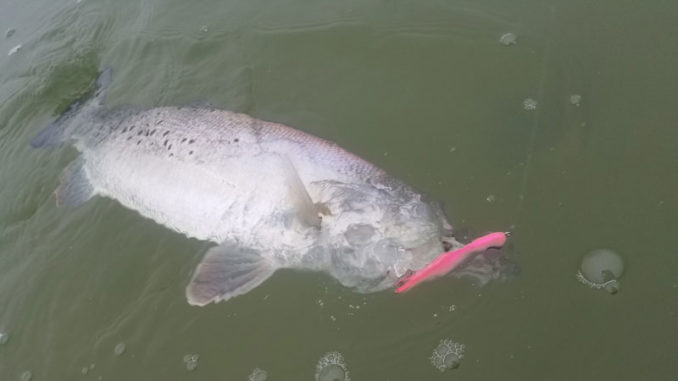
These lures will tempt specks that won’t quite “top out”
For those new to the column, I mentioned earlier that I’ll be discussing lures and techniques in an ascending manner. Remaining true to form, we explored the middle part of the water column with various jerkbaits, and as we progress to the surface, I would be remiss if I didn’t discuss the zone just below the top.
Year after year at about this time, anglers start to unveil a seemingly neglected box of topwater plugs. Split-ring pliers and fresh hooks often accompany a cold beverage of choice to the serenade of a Spotify playlist on workbenches or boats. Along those same lines, experience on the water proves that fish may not be as eager to reward our spirited intent. To help bridge that gap, insert this month’s discussion.
The 6 to 8 inches of water just below the surface can be extremely productive when fished effectively and with specific purpose. Short strikes and swirls often confirm lack of fish commitment to surface baits. But providing the right lure targeting those mere inches remains invaluable.
Three lures that help you fish that part of the water column efficiently are the Borboleta Lele, the Texas Custom Lures’ MirrOlure Double D and the tried-and- true MirrOlure 7M.
Borboleta Lelé

Produced by a company in Brazil, Borboleta’s self-proclaimed, most- famous lure is the Lelé. At 3 inches, it’s smaller in stature than the other two. This bait not only produces plenty of bites, but big ones as well. Outfitted with No. 4 treble hooks and weighing 3/8-ounce, its unique shape provides not only a great profile, but excellent action. Designed to be twitched down on a steady two-count cadence, the bait darts downward approximately 8 to 10 inches and floats back to the top. It can be fished on an accelerated walk-the-dog cadence. But most bites come on the pause as the bait retreats back to the surface. Speaking of floating back to the surface, the Lelé is slower than a 7M. But it’s faster than the Double D. So this bait gives you a smaller profile with an exaggerated ascent.
MirrOlure 7M

The angling world is fortunate that the 7M exists. Decades ago, experienced anglers wouldn’t be caught without the “topwater” capability of this ever-so-consistent bait, but somewhere along the way, we lost our appreciation for this lure’s fishability. On a recent trip, I asked Dr. Jay Wright, who holds three line-class, fly-rod world records for speckled trout, “What is your favorite artificial lure to throw when looking for big fish?” Without hesitation, he said, “a 7M.” He then reached under the gunwale of his flats boat and pulled out a spinning rod outfitted with a 7M in a mullet pattern.
For those that haven’t fished this bait or know its capability, it’s very similar to the Lelé, but its ascent rate is very fast. In other words, from the time your stop your twitch cadence, the bait retreats to the surface in less than half a second.
Having said that, this bait provides an exceptional offering and perfect solution to connecting with those fish that remain uncommitted to eating a surface plug. Unlike the other baits, its carries three sets of treble hooks, which can be cumbersome, but can be adjusted. As stated, the 7M is the subsurface extension of a topwater since it ascends so quickly, and a great “stand-by” option on less committed topwater fish.
Double D

Newer in terms of packaging and sales, this lure is the most recent to hit the market. Many anglers outside of Texas have yet to see the Double D, let alone fished it exclusively. When I saw and understood this lure’s capability, it was a no-brainer, and it started producing some large fish.
At first glance, people confuse the Double D with a MirrOlure MirrOdine XL (27MR) since its profile is exactly the same. But the internal mechanism is different, and instead of sinking like the 27MR, the Double D floats back to the top after an angler’s twitch cadence. This lure has the slowest ascent rate of the three, as well as dive depth, 9 to 12 inches.
The majority of the bites come on the exaggerated pause, which can be upwards of 3 seconds before surfacing. In other words, this bait is a great cold-water offering or when a more pronounced, below-the-surface profile is desired. Having said that, do not be fooled by its slow fishability. Big fish in water temperatures as cold as 53 degrees have completely engulfed these baits at or near the surface after an exaggerated pause, and they do so with authority. Bottom line, add this lure to compliment your topwater arsenal when fish won’t commit; it’s the easiest decision you’ll ever have to make.
In a nutshell, below-the-surface twitch baits provide the perfect hybrid capability for those finicky spring topwater trout. If you haven’t explored these types of baits or their capabilities, I encourage you to do so. And don’t forget about those critical inches just below the top — it can pay huge dividends.

